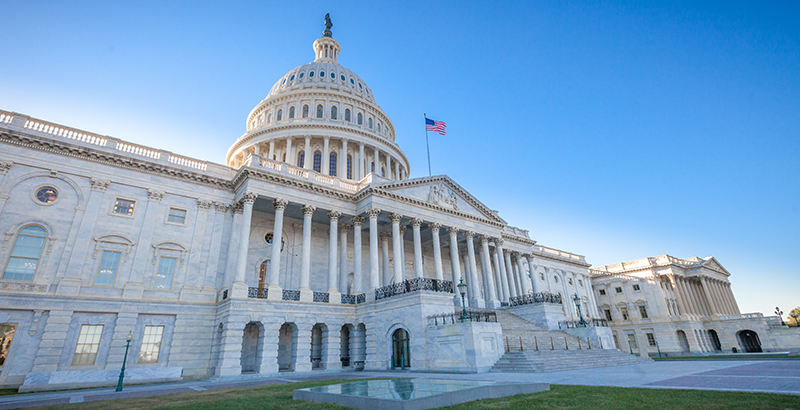Congress’s Looming $4 Billion Showdown Over Education Funding: As Senate Releases 2020 Priorities, a Huge Split With House Over Title I, IDEA, Charters & More

Senate Appropriations Committee leaders released their bill funding the Education Department Wednesday, setting up a collision course with the House as lawmakers work to fund the federal government for 2020.
The Senate bill differs significantly from the version the House passed in June. For the Education Department overall, the bills are $4.5 billion apart, with the House offering big funding increases for long-standing education programs that the Senate bill keeps flat.
The different funding levels are just the first point of disagreement between the chambers: The bill that funds the Education Department also funds the Department of Health and Human Services and therefore wades into the tricky issue of abortion.
A Senate Appropriations subcommittee meeting, scheduled for last week, was postponed over disagreements about proposed amendments related to abortion and the overall funding level. A procedural vote Wednesday afternoon that would skip committee consideration and bring the bills directly to the full Senate failed 51-44, short of the 60 votes required.
Congress earlier this summer agreed to an overall budget deal that set out the total spending level for the federal government for fiscal 2020 and how that funding is to be divided between defense and non-defense programs. But the deal was no more specific than that, leaving lawmakers to decide later how much money should be spent on each agency and how much on each line item within those agencies.
Current funding runs out Sept. 30, the end of the fiscal year. There is limited risk of an immediate shutdown, however, as the House is set to vote later this week on a continuing resolution that would fund the government at current levels, reportedly through late November.
Among the preK-12 spending proposals where the chambers are furthest apart:
More Than $2.5 Billion Apart — House Aims to Boost Long-Standing, High Dollar K-12 Programs: For four marquee ed programs — Title I grants for low-income students, IDEA grants for students with disabilities, afterschool programs and Title II teacher training grants — the Senate bill proposes level funding while the House would offer increases. Notably, House members proposed adding $1 billion each for Title I and IDEA and $500 million apart on Title II.
The continued funding of afterschool programs and teacher training grants marks the third year in a row that Congress has rejected the Trump administration’s request to end federal funding.
$60 Million Apart — Senate Looks for More Funding for Charter Schools: The federal charter school program is one of the very few areas where the Senate proposes higher funding than the House. The House proposed cutting the program by 10 percent, to $400 million, while the Senate offered a boost, to $460 million — but both fall short of the Trump administration’s $500 million request.
Included within the Senate’s funding proposal is $7.5 million for rural charter schools. In a report, the committee says the grant funding could go to institutions of higher education, which may be “uniquely suited” to help address challenges of charter schools in rural areas.
$3.9 Billion Apart — House Gives Big Bump to Early Childhood Programs: Beyond the Education Department, the Senate bill would provide $5.3 billion for child care assistance to low-income families and $10.1 billion for Head Start pre-K. Those spending levels, both increases that match what President Trump requested, fall well short of the House, where lawmakers offered $7.7 billion for child care and $11.6 billion for Head Start.
$243 Million Apart — Senate Proposes Flat Funding for English Language Acquisition: The House bill offered a whopping 35 percent increase for English learners, to $980 million, with the Appropriations Committee writing in an accompanying report that many states are grappling with a rapid growth in English learner populations, and providing increased resources for these students is a “top priority for the committee.” The Senate bill, meanwhile, sticks with the Trump administration’s recommendation to leave the funding flat at $737 million.
$15 Million Apart — Both Chambers Allocate Additional Funds for School Safety: Lawmakers are generally closer to an agreement on another contentious issue: school safety. The House would authorize $120 million, while the Senate would offer $105 million.
Still, there’s a difference on policy. The House report, written by the Democratic majority, criticizes the Federal School Safety Commission for failing to address gun control, and for the Education Department’s reliance on “racially biased conclusions” to justify revoking Obama-era discipline guidance.
The Senate’s document, written by Republicans, is silent on the subject.
Get stories like these delivered straight to your inbox. Sign up for The 74 Newsletter

;)
